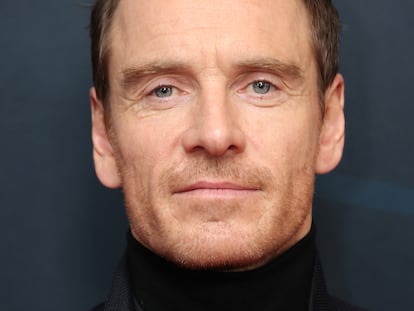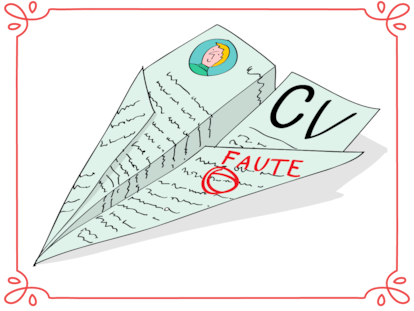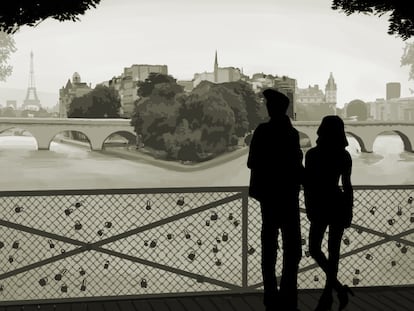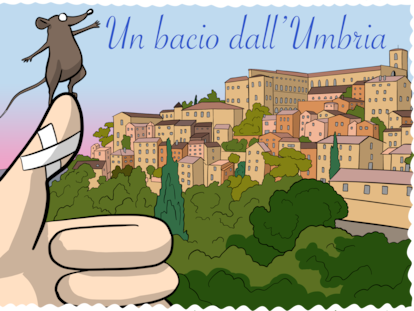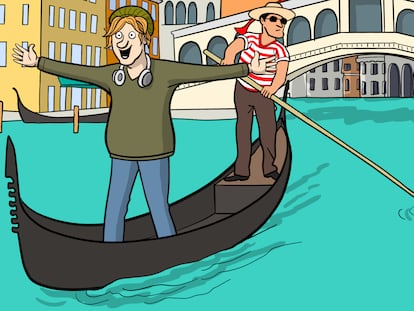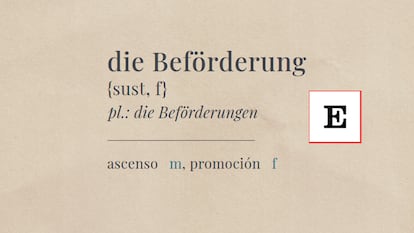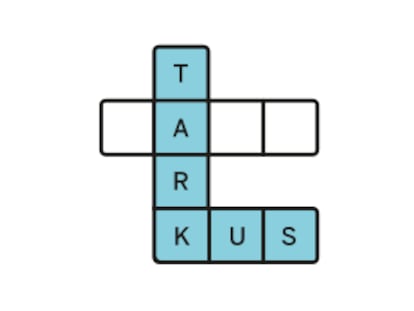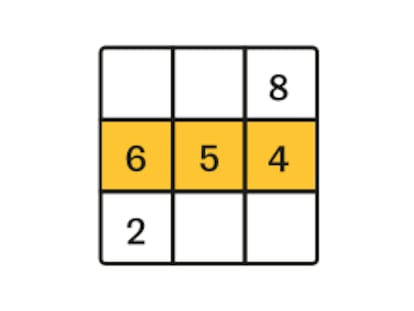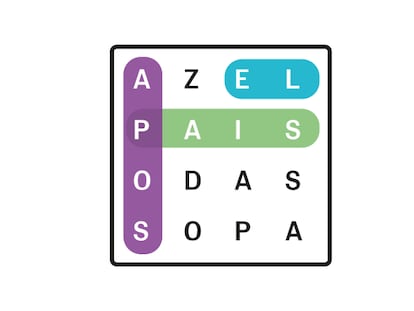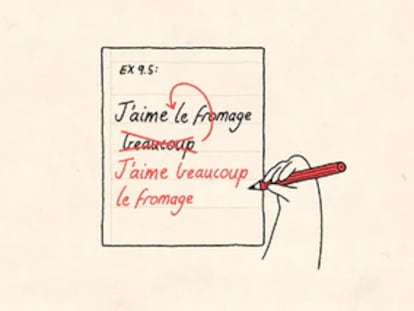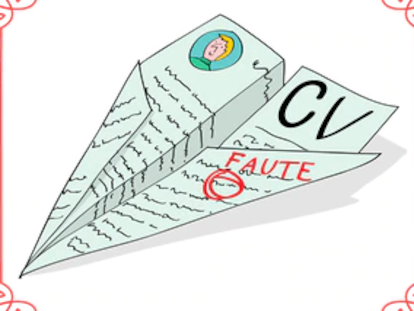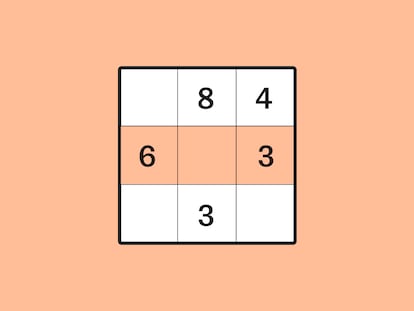Tom Selleck at 80: How a risky role revived the career of a Hollywood heartthrob
The ‘Magnum, P.I.’ star and Monica’s beloved boyfriend on ‘Friends’ has had a successful film career — just not the kind that playing Indiana Jones would’ve delivered

They say Tom Selleck’s appearances on Friends had to be reshot because the audience sighed every time he walked on set (and Brad Pitt had also been a guest star on Friends). His character, ophthalmologist Richard Burke, was originally meant to appear in just three episodes, but fan demand kept him around for 10 — and turned him into one of the show’s most beloved figures. Richard embodied a kind of old-school masculinity: he smoked cigars, watched war documentaries, and sported a thick mustache that Chandler and Joey tried — and failed — to copy. No one could.
“Richard’s the underappreciated romantic hero of the show — he’s this grown-ass adult, basically the poster-man for hunky masculinity (surely Tom Selleck is on a number of actual posters), confident, wise, and kind,” wrote Vulture.
The Washington Post also sung his praises: “Sturdy as Mount Rushmore, athletic and eminently likable, Selleck exudes traditional American masculine traits; he’s the very embodiment of the strong, silent type.”
This wasn’t the first time Selleck was used as a cultural yardstick for manliness. His role in Magnum, P.I. helped define what scholar Susan Jeffords called the “remasculinization of America” after the disappointment of the Vietnam War.
The real Tom Selleck isn’t so different from his characters. He’s a former serviceman and baseball player who lives on a ranch, wears Wranglers, plaid shirts and cowboy boots, and has a hunting lodge with a cigar lounge. On one of the pillows? An embroidered quote from Mark Twain: “If I cannot smoke cigars in heaven, I shall not go.” Chandler and Joey would have loved it.
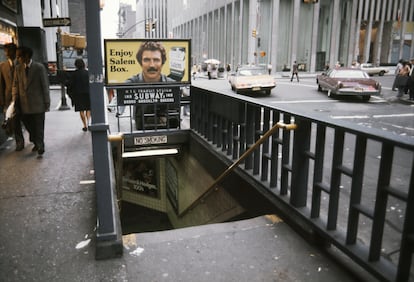
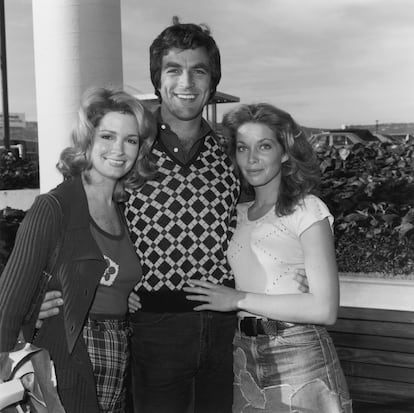
At six-foot-three, with piercing blue eyes and a mustache that consistently ranks among the greatest of all time — right alongside Burt Reynolds and his friend Sam Elliott, forming the holy trinity of American facial hair — Tom Selleck is one of those rare men cursed by being too handsome. He confessed that he was often rejected at castings because his looks were “distracting.”
He was beginning his career just as Hollywood was turning away from the classic matinee-idol charm of the 1950s and 1960s. “ Dustin Hoffman didn’t have as tough a time getting to be taken seriously,” he told The Telegraph." This was the time when Al Pacino, Robert De Niro, and even Woody Allen and Dudley Moore were getting the girl. “I think a lot of the time I walked in the door and they didn’t take me seriously.”
There are actors who are defined by the roles they played. And Tom Selleck is also defined by one he didn’t. Beyond the mustache, there’s one unavoidable story in his career: he was almost Indiana Jones. When George Lucas was casting Raiders of the Lost Ark (1981), he passed on the obvious choice — reprising Harrison Ford after Star Wars — and pitched Steven Spielberg on a fresh face: Tom Selleck. Selleck nailed two auditions, and the role was essentially his. They handed him the script, and any lingering doubts he had vanished. “I got to about page eight, where the boulder is rolling down the hill after Indiana Jones, and I just said, ‘Oh, shit. This is really good,‘” he recalled in a conversation with Esquire.
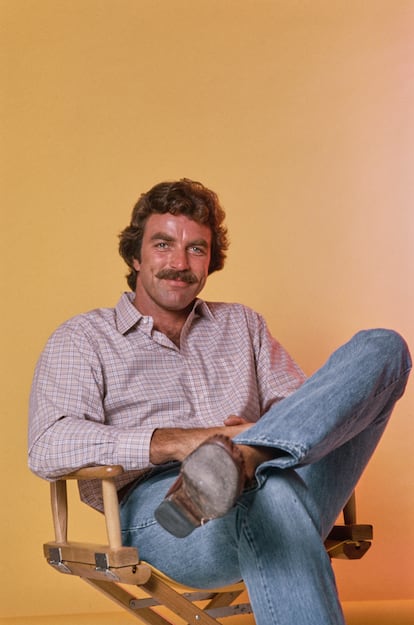
He was excited — but there was a problem. At the same time he was being tapped to play Indiana Jones, Tom Selleck had also landed the lead in Magnum, P.I., a CBS detective series set in Hawaii. He told Lucas and Spielberg, and they were open to finding a way for him to do both. CBS, however, wasn’t. They insisted on exclusivity. So Selleck had to walk away. Harrison Ford’s name resurfaced, and the rest, as they say, is history.
Ford himself remains grateful for the twist of fate: “Tom Selleck had the job, but he also incurred an obligation to do a television series, and he was unable to get out of that contract. I became the second choice, and I’m very grateful for Tom. Thank you, Tom. If you’re listening, thanks again,” he joked in an interview with Deadline.
Selleck doesn’t dwell on what might have been — in fact, quite the opposite. The experience became a quiet validation, helping him shake off the imposter syndrome that had followed him. “The ultimate acceptance of ‘you’re enough, Tom’ was Spielberg and Lucas wanting me. And I always held on to that,” he said.
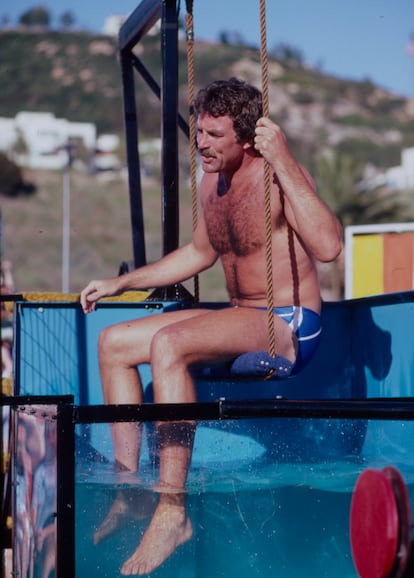
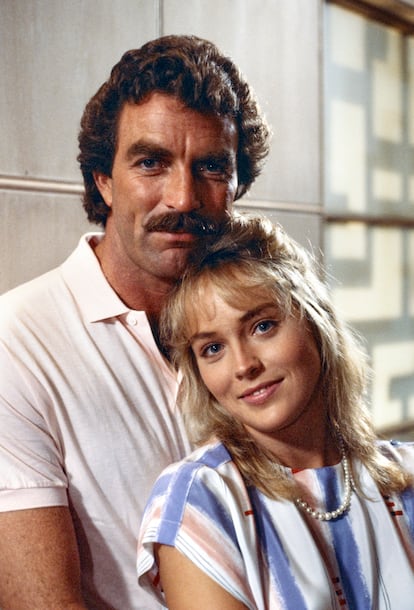
It wasn’t the only role Tom Selleck lost because of Magnum, P.I. — or to Harrison Ford, for that matter. He also had to pass on the lead in Witness (1985) and The Terminator (1984), and he turned down the part that eventually went to James Garner in Victor/Victoria (1982). Other roles he declined voluntarily: he passed on playing Mitch Buchannon in Baywatch, not wanting to be typecast as a sex symbol. He didn’t take well to being named the Sexiest Man of 1986 by Ladies’ Home Journal readers, either. “That was embarrassing,” he told The Telegraph. “If you buy into those polls, what happens if you start losing?”
Still, Selleck never saw Magnum as a consolation prize. It was the role that changed his life. The show earned him an Emmy and propelled him to television stardom. But his relationship with the series got off to a rocky start. He was appalled by the pilot: the character felt too perfect, too much like James Bond. But at 35, an age by which most actors had already made their mark, he knew this could be his last shot.
He had bounced around television for years — Marcus Welby, M.D.,Mannix, The Streets of San Francisco, Charlie’s Angels — but never lasted more than a single episode. Complaining could have meant the end of a career that hadn’t even started. Still, he took the risk. He told the producers the pilot was “horrible,” and they listened. A new writer came in, and the character of Thomas Magnum was reimagined.
The series went on to run for eight seasons, and Selleck became an icon — complete with his Ferrari 308 GTS, Detroit Tigers cap, signature mustache, and Hawaiian shirts sewn by a local woman he met on the beach. “By the third episode I was getting recognized by tourists in Hawaii,” he recalled. “But for a long time I wasn’t aware of my level of fame.”
Me, an actor?
Like many actors who become Hollywood legends, he stumbled into acting by accident. He went to college not out of academic ambition, but with dreams of becoming a professional baseball player. But his good looks led him down a different road. Friends encouraged him to appear on The Dating Game, a blind-date TV show that had served as a platform for stars like Steve Martin and Arnold Schwarzenegger. His smile and physical appeal caught the producers’ attention. Commercials came first, then bit parts on TV.
“All of it happened so quickly, I never once stopped to ask myself: ‘Why? Why am I doing this?’ I’m not sure I can answer that even now,” he writes in his memoir You Never Know: A Memoir, published last spring. “It’s true, I was never interested in becoming an actor.”
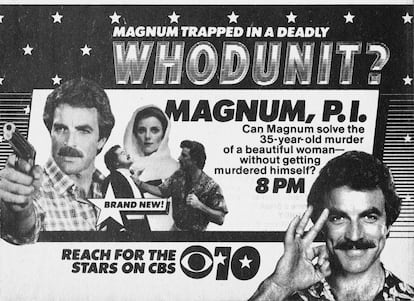
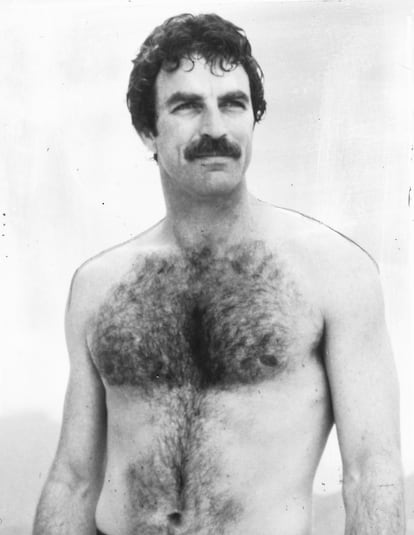
This explains why, midway through his contract with Fox — where he appeared on a talent show — Selleck served six years in the United States Army Infantry. His affinity for military life and his frequent portrayal of law enforcement roles — cops, detectives, sheriffs — may trace back to a childhood experience. Following a family tradition, his father once took young Tom, as he had with his three older brothers, to a jail in Detroit, where he spent hours locked in a cell. “That made me think I never wanted to be in jail for any reason,” he recalled.
Unlike many stars, Selleck has remained largely free of scandal, save for one odd incident involving the unauthorized use of water to irrigate his avocado ranch, which was settled out of court.
He always knew his looks would shape his career. His first role was as “Young Stallion 4” in the bizarre 1970 adaptation of Gore Vidal’s Myra Breckinridge, starring Mae West. Selleck had nursed a childhood crush on West, who enthusiastically returned the admiration. In interviews, she compared him to another rising star she had championed early on: Cary Grant.
At the height of his fame, Selleck scored several box office successes. Alongside Ted Danson and Steve Guttenberg, he starred in Three Men and a Baby (1987), a remake of the French hit, and its sequel Three Men and a Little Lady (1990). He also showcased his talents as a leading man in Her Alibi (1989), a lighthearted thriller in which he starred opposite model Paulina Porizkova.
But even a strong run isn’t bulletproof — just a couple of misfires derailed his momentum. The ensemble comedy Folks! (1992) flopped at the box office, and his turn as King Ferdinand in the widely panned Christopher Columbus: The Discovery (1992) earned him a Razzie Award, which he later collected in person on Chevy Chase’s short-lived talk show.
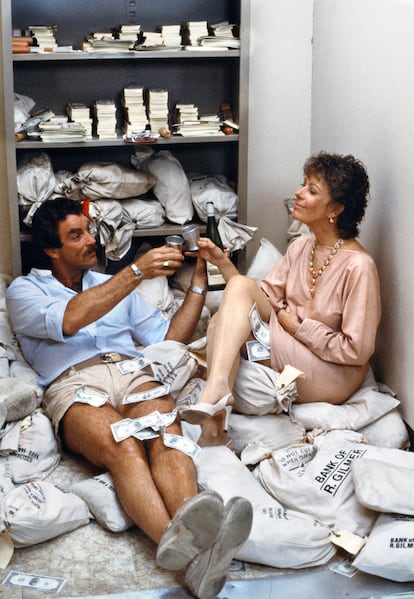
After years on the fringes, he made an unexpected return to romantic comedy — and his career was revived thanks to a kiss. The one he shared with Kevin Kline in In & Out (1997), one of the few mainstream Hollywood films at the time to address homosexuality, and the most significant since Philadelphia (1993). The film was inspired by Tom Hanks’ Oscar acceptance speech, in which he thanked a gay drama teacher. That kiss, conveniently leaked ahead of the premiere, became one of the season’s most talked-about moments and helped turn the film into a highly anticipated event.
In In & Out, Tom Selleck plays an openly gay reporter who falls for Kline’s character — a surprising choice for someone long seen as the ultimate emblem of American manliness. But there was a personal reason behind his decision to take the role. In 1993, Selleck had sued the tabloid The Globe for publishing a story claiming he was gay, a move that led to accusations of homophobia — accusations he strongly denied. “It’s not anti-gay to say you’re not gay,” he insisted. “I sued the [National] Enquirer in 1983 because they wrote a story claiming that I had an affair with Victoria Principal, whom I’d never met.”
What angered him most, he said, was that The Globe published the article just as he had gotten engaged to his wife. “This tabloid was implying that I was leading a double life. It was hurtful to other people, which is where I draw the line,” he said.

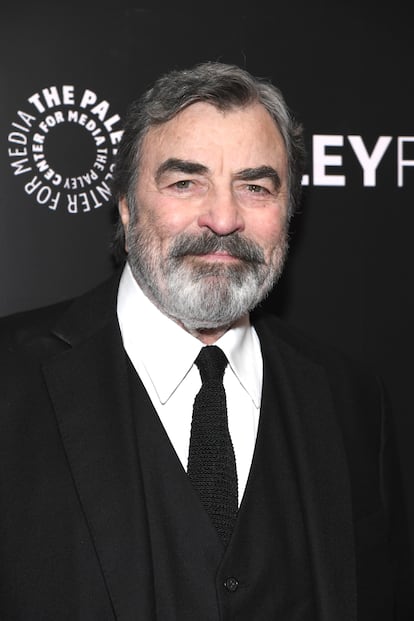
He says plenty of people asked whether he wasn’t afraid the role might damage his image — but that was the last thing on his mind. “I’ve been around long enough to know that actors who obsess about their image are doomed to watch their old movies on TV when nobody wants to hire them. You can’t be who you were 10 years ago. I think if you can afford to, you should take risks,” he told The Morning Call. And the risk paid off. That performance, along with his stint on Friends, helped reignite his career.
The role was also surprising given that Selleck is a staunch conservative. He openly idolizes Ronald Reagan, supported Senator McCain over Barack Obama, and took part in Mitt Romney’s campaign — but he’s shown no particular warmth toward Donald Trump. Little is known about his personal life; even his memoir reveals little.
Rumors have circulated about romances with famous actresses, but what’s confirmed is that he was married to actress Jacquelyn Ray, from whom he divorced before the Magnum, P.I. boom, and that he’s been married to Jillie Mack since 1987. They met in London’s West End in 1983 when she was performing as Rumpleteazer in Cats. He saw the show eight times, causing a stir in the theater, though his presence didn’t impress everyone — she had no idea who he was.
Selleck guards his privacy fiercely. He avoids public appearances beyond the screen, has called social media “corrosive,” and says he doesn’t even know how to send an email.
His most recent major role has just come to an end: for 11 seasons, he played Frank Reagan, the patriarch of a multigenerational police family in Blue Bloods. Selleck fought to keep the show going, but now that it’s been canceled, he’s already looking for his next project. Retirement isn’t on his radar. He’s not interested in coasting on memories. He’s still chasing what’s next because, after all, he’s only 80.
Sign up for our weekly newsletter to get more English-language news coverage from EL PAÍS USA Edition
Tu suscripción se está usando en otro dispositivo
¿Quieres añadir otro usuario a tu suscripción?
Si continúas leyendo en este dispositivo, no se podrá leer en el otro.
FlechaTu suscripción se está usando en otro dispositivo y solo puedes acceder a EL PAÍS desde un dispositivo a la vez.
Si quieres compartir tu cuenta, cambia tu suscripción a la modalidad Premium, así podrás añadir otro usuario. Cada uno accederá con su propia cuenta de email, lo que os permitirá personalizar vuestra experiencia en EL PAÍS.
¿Tienes una suscripción de empresa? Accede aquí para contratar más cuentas.
En el caso de no saber quién está usando tu cuenta, te recomendamos cambiar tu contraseña aquí.
Si decides continuar compartiendo tu cuenta, este mensaje se mostrará en tu dispositivo y en el de la otra persona que está usando tu cuenta de forma indefinida, afectando a tu experiencia de lectura. Puedes consultar aquí los términos y condiciones de la suscripción digital.
More information
Archived In
Últimas noticias
There is as much life left to discover on planet Earth as that which is already known
Dozens presumed dead, around 100 injured in fire at Swiss Alps bar during New Year’s celebration
Is porn for women different from conventional porn? We spoke to those who make it
Cartagena de Indias is sinking: What can the city do to mitigate it?
Most viewed
- Sinaloa Cartel war is taking its toll on Los Chapitos
- Reinhard Genzel, Nobel laureate in physics: ‘One-minute videos will never give you the truth’
- Oona Chaplin: ‘I told James Cameron that I was living in a treehouse and starting a permaculture project with a friend’
- David King, chemist: ‘There are scientists studying how to cool the planet; nobody should stop these experiments from happening’
- Why the price of coffee has skyrocketed: from Brazilian plantations to specialty coffee houses


